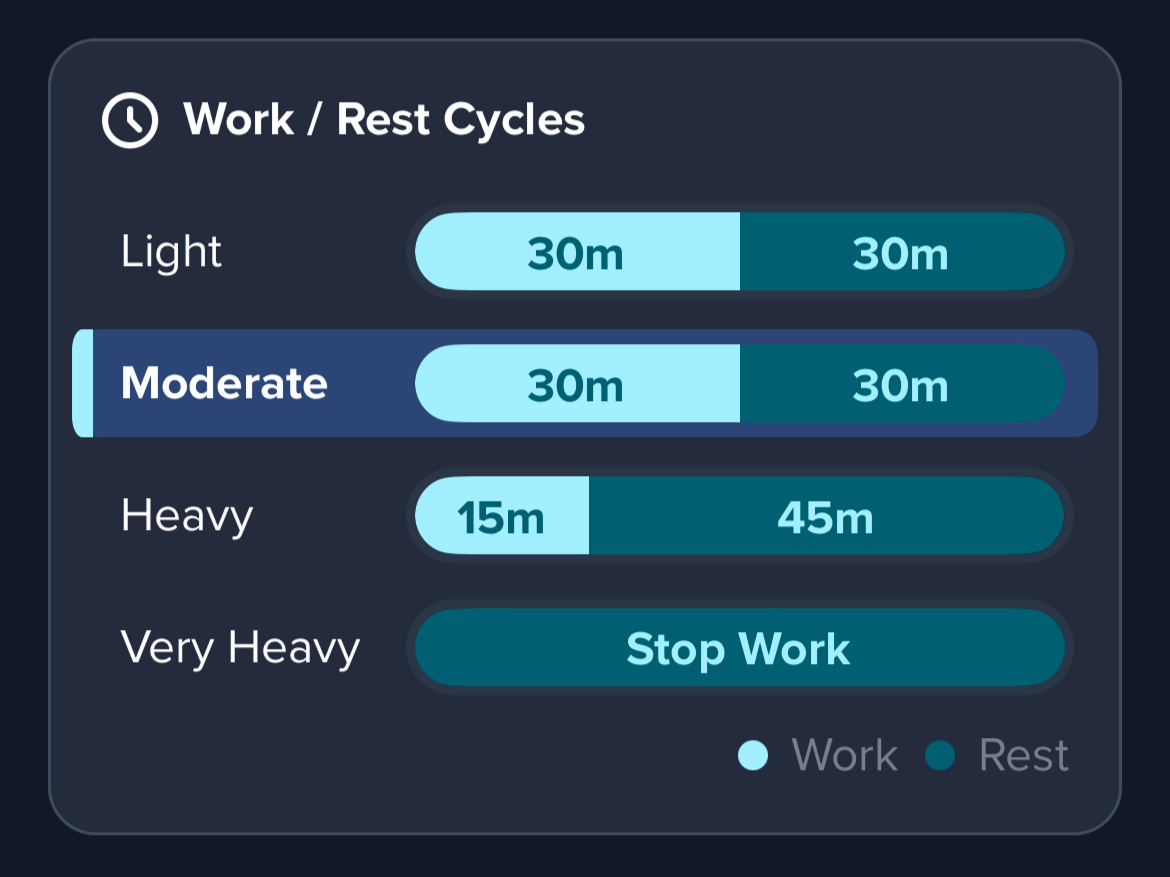Designing a Safer Way to Work in Extreme Heat
Year: 2025
Role: Product Designer
Challenge
With heat-related injuries on the rise and increasing regulations around environmental safety, Perry Weather needed a smarter way to help teams make real-time decisions about heat exposure.
Safety managers were relying on manual processes to manage rest breaks during extreme heat. These decisions were inconsistent, time-consuming, and often unsafe.
We set out to build an in-app tool that could automatically display risk-adjusted work/rest cycles, tailored to each user’s location, workload, and clothing, while remaining easy to understand in the field.
Process
I started by talking directly with safety officers, EHS managers, and athletic trainers, uncovering common friction points:
No centralized source of truth
One-size-fits-all guidelines that ignored real conditions
Too many tools required to calculate safe break times
From there, I mapped the core workflows and translated safety policy logic into flexible, configurable UI components. I collaborated closely with our meteorology and engineering teams to design a system that adapts automatically based on:
Real-time conditions (WBGT, Heat Index, or Temp)
PPE and clothing layers
Workload intensity
From initial notes to final design.
Impact
The feature launched publicly in June 2025 and has already seen strong adoption across key customer segments, including construction firms and athletic departments.
Our early access users reported:
Faster decision-making under extreme heat
Increased confidence and policy compliance in the field
Reduced confusion thanks to simplified, visual guidance
Beyond safety, this feature supports customer goals around productivity, risk reduction, and liability mitigation.
Key Learnings
Designing for field use means every interaction needs to be quick, clear, and usable on mobile, especially when users are in high-stress, outdoor environments.
Visualizing complex policy logic (like intensity modifiers and clothing adjustments) required breaking things down into simple, reusable design patterns.






